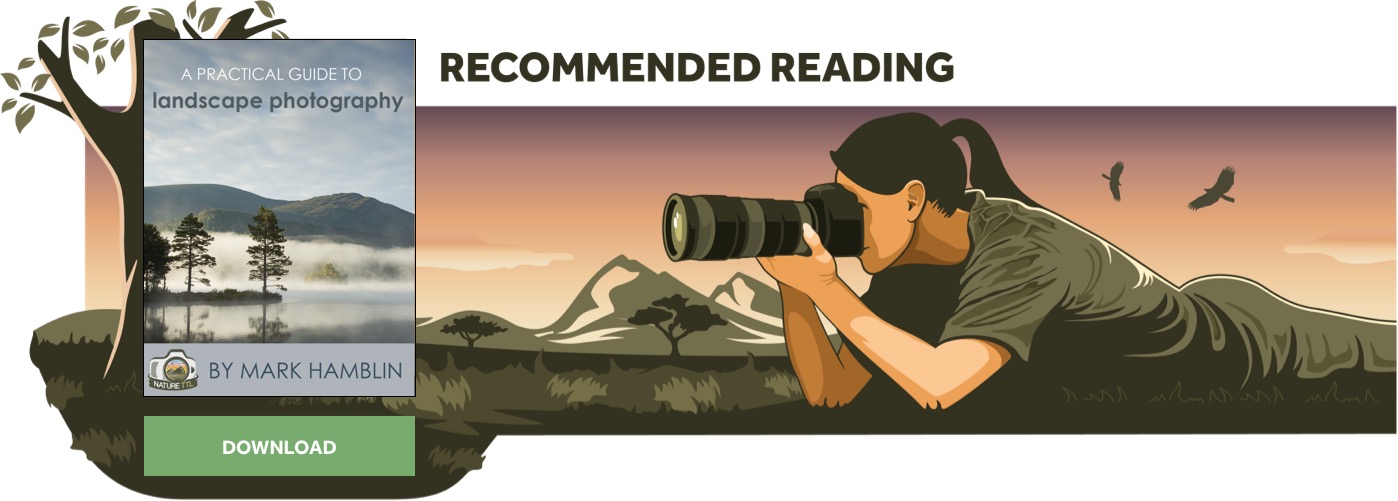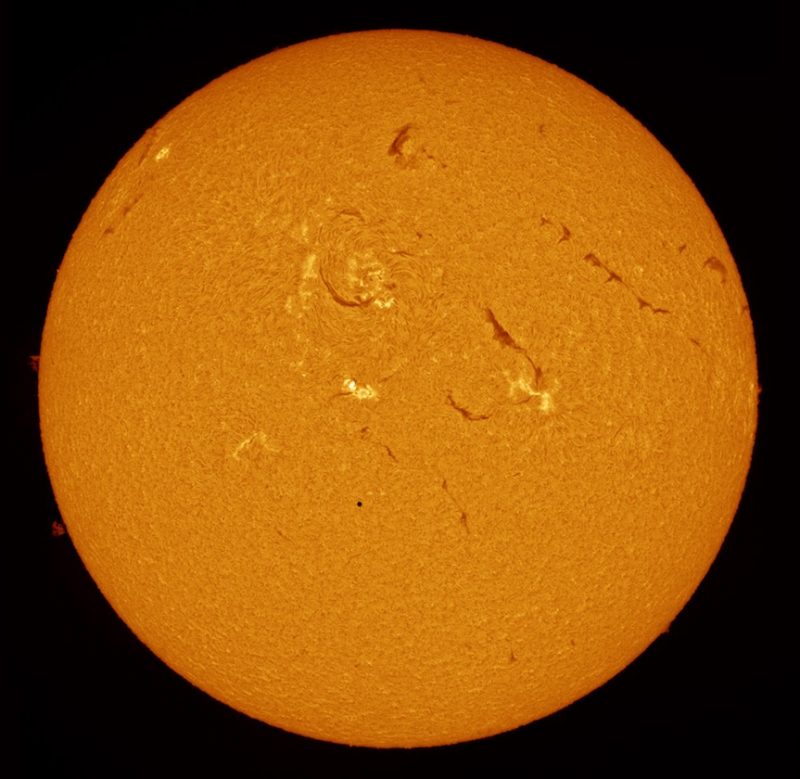Astronomy Photographer of the Year 2017 Winners

Following from August’s shortlisted images for Insight Astronomy Photographer of the Year 2017, the winners have finally been revealed – and it’s nothing short of a celestial spectacular. The Royal Observatory Greenwich, in association with Insight Investment and BBC Sky at Night Magazine, chose winners for the 9 categories from over 3800 entries from 90 countries in total.
From glowing nebulae to distant galaxies, stretches of almost endless Milky Way and swirling auroras, this year’s winners confirm that beauty resides far beyond our ozone. The overall winner is Artem Mironov of Russia, for his image of the Rho Ophiuchi Clouds – a ‘dark emission and reflection nebula’ roughly 460 light years from Earth.


Earning him the top prize of £10,000, the image will also take centre stage at the winner’s exhibition in the Royal Observatory Greenwich on 16th September 2017 to 22nd July 2018. Mironov’s interstellar image is a complex of colour, cloud and an infinity of winking stars, and thoroughly deserving of the top spot.
“Judging the entries has been a real pleasure but also tougher than ever, such was the all-round quality of the field. I was particularly impressed that there were so many new and ground-breaking responses to the night sky captured by the entrants this year,” said judge Chris Bramley.
In addition to the nine categories, two special prizes The Sir Patrick Moore Prize for Best Newcomer and the Robotic Scope prize were awarded. Check out the winning images for each category below:
Overall Winner and Stars & Nebulae:

Taken over three nights at a farm in Namibianear Gamsberg Mountain, this image depicts the Rho Ophiuchi Cloud Complex, sometimes known as ‘Rho Oph’ for short or the Ophiuchus Molecular Cloud, is named after a bright star in the region. It is a dark emission and reflection nebula about 14 light years across and is situated approximately 460 light years away from our planet, in the constellation of Ophiuchus (the ‘Serpent-Bearer’). It is one of the closest star-forming regions to the Solar System.
Hakos Farm, Windhoek, Namibia, 6 August 2016. Sky-Watcher 200 mm f/4 reflector telescope, Sky-Watcher HEQ5 Pro mount, Canon 5D Mark II camera, ISO 1600, 15-hour total exposure.
Aurorae:

During October 2016 the photographer stood and observed the waves from the sea slowly rolling up on the long beach making the sand wet, resulting in great conditions for catching some reflections. Suddenly, clouds emerged from the nearby mountains and floated across the sea allowing him to capture this other-worldly scene of a powerful, teal aurora sweeping across the night sky in Stokksnes, Iceland.
Stokksnes, Iceland, 5 October 2016. Canon EOS 5D Mark III camera, 24mm f/2.0 lens, ISO 1600, 6-second exposure.
Galaxies:

A bright, spiral galaxy, Messier 63 looks like a star necklace in which the stars have crashed outwards from the galaxy’s centre, producing this fantastic long train. The ghostly star arcs of the Sunflower galaxy had long been an elusive target for the photographer, but upon deciding to take the image in one of the darkest places in Europe – the Rozhen Observatory in the Rhodopes Mountains, Bulgaria – he successfully captured the astronomical object. Despite a warm winter and an early spring, there were snow drifts more than one metre high and it took a lot of effort to break through them, but the photographer prevailed, and captured the glittering galaxy in the unbelievably dark and crystal clear of Rozhen.
Rozhen Observatory, Smolyan Province, Bulgaria, 6 April 2016.10-inch f/3.8 homemade reflector telescope at f/4.4, Whiteswan 180 mount, QSI 583wsg camera, 22-hour total exposure.
Our Moon:

This hyper-saturated picture depicts the face of the lunar surface in a new light. On the brownish terra of our natural satellite, the Moon, the impact crater and its ray system appear as blue-white structures that extend over a thousand miles. The Tycho Crater, named after Danish astronomer Tycho Brahe, has a bluish shade that is characteristic of the youngest craters on the Moon, with this particular feature estimated to be 108 million years old.
Budapest, Hungary, 12 December 2016. 250 mm f/4 reflector telescope at f/10, Sky-Watcher EQ6 mount, ZWO ASI290MM and Sony SLT A99V cameras, composite of 5000 monochrome frames and 50 colour frames.
Our Sun:

On 9 May 2016, The Transit of Mercury occurred, with the smallest planet in the solar system passing directly between the Earth and the Sun over the course 7.5 hours – the longest transit of the century. Mercury can be seen towards the centre of our star in the image as a tiny black dot. The day of the transit had dawned cloudy but weather forecasts showed clear skies to the north, and the photographer was lucky enough to have a very kind friend who offered the use of his garden so that they were able to view the transit from beginning to just past mid-point.
Preston, Lancashire, UK, 9 May 2016. TEC140 140 mm f/7 refractor telescope at f/9.8, Solarscope DSF100 H-alpha filter, Sky-Watcher EQ6 Pro mount, PGR Grasshopper 3 camera, stacked from multiple exposures.
People & Space:

A lone stargazer stares up at the stars of our galaxy, the Milky Way, as they stretch across the night sky over the glacier ‘White Stones’ (Piedras Blancas) in the Los Glaciares National Park, Argentina. Alone in the darkness, the photographer made his way over the huge rocks with the mountain river roaring under his feet and the glacier rumbling nearby.
El Chaltén, Santa Cruz Province, Argentina, 27 September 2016. iOptron Sky-Tracker mount, Sony A7S camera, 18 mm f/2.8 lens, ISO 5000, 30-second exposure.
Planets, Comets & Asteroids:

The changing face of our neighbouring planet Venus as it grew from 86.6% illuminated and 11.9 inches in diameter on the 25th September 2016, to 1% illuminated and 59.3 inches in diameter six months later, as seen from London. All the images were taken with the same setup, so the changing size of Venus, as it approached the point between us and the Sun, is really apparent. Infrared and Ultraviolet filters were used to capture cloud features during the larger crescent phases, and those where the apparent diameter is small or the crescent is thin, were taken using only an Infrared pass filter. All were stacked in Autostakkert and sharpened in Registax. Final processing was performed in Photoshop CC.
London, UK, 25 March 2017. Celestron C11 EdgeHD 355.6 mm f/10 reflector telescope, Celestron CGE Pro mount, ZWO ASI174MM camera, composite of panels stacked from multiple exposures.
Skyscapes:

The serene sight of the dusky, Milky Way viewed through the minimalist outdoor passageway of LAMOST (the Large Sky Area Multi-Object Fibre Spectroscopic Telescope) at the National Astronomical Observatory of China. Shot with an 85 mm lens, the image is a composite of a three-panel panorama, each one with a single exposure.
Xinglong, Hebei Province, China, 9 April 2016. Sony ILCE-7s camera, 85 mm f/1.4 lens, ISO 10000, panorama of three 8-second exposures.
Young Astronomy Photographer of the Year:

An incredibly detailed image of the ringed planet, Saturn, which the photographer captured on a trip to the desert near Al Khanzna, with her dad. The conditions on the 27 May meant the body of Saturn appeared to have more detail than the photographer had ever seen before, resulting in a trip to the desert to escape the light pollution of the city. Using her new ZWO 244 colour camera for the first time coupled with conditions that were so stunning the photographer even managed to capture the beauty of the Cassini division in the rings.
Abu Dhabi, United Arab Emirates, 27 May 2016. Celestron C11 355.6 mm f/10 reflector telescope at f/2.7, Sky-Watcher AZ-EQ6 GT mount, ZWO ASI224MC camera.
Sir Patrick Moore Prize for Best Newcomer:

A vivid deep-red image of the Cone Nebula, lying about 2,700 light years away in the constellation of Monoceros. The image consists of 20 x 10-minute exposures per filter and is an integration of LRGB (luminance, red, green and blue) and H-Alpha (hydrogen-alpha) filters. The image is calibrated with flat frames and bias frames, aligned and combined to produce one integrated full colour image. PixInsight and Photoshop was used to process the image.
Frenegal de la Sierra, Badajoz, Spain, 10 January 2017. William Optics 132 mm f/5.6 apochromatic refractor telescope, Celestron CGE Pro mount, QSI 660WSG8 Mono CCD camera, 16 2/3-hour total exposure.
Robotic Scope:

A vibrant image showing the glowing green, comet C/2013 X1 PanSTARRS whizzing past the luminous pink and blue Helix Planetary Nebula, on 5 June 2016. This photograph was taken at an observatory on Tivoli Farm in Namibia, where the photographer installed a mount and telescope with a friend of his. The observatory is fully remote-controlled and frequently maintained during visits, and enabled the photographer to capture this mosaic image of two panels.
Tivoli Farm, Khomas, Namibia, 5 June 2016. ASA Astrograph 12-inch N 300 mm f/3.6 reflector telescope, ASA DDM 85 mount, FLI Microline ML 16200 camera, 94-minute total exposure.
All winners and shortlisted entries are to be published in an official book by Collins, on sale at bookstores and online from 3rd November for £25, or exclusively from the Royal Observatory Greenwhich shop from 17th September. To stay informed about future competitions make sure to follow the contest’s website, or follow the observatory on Facebook, Instagram and Twitter.





